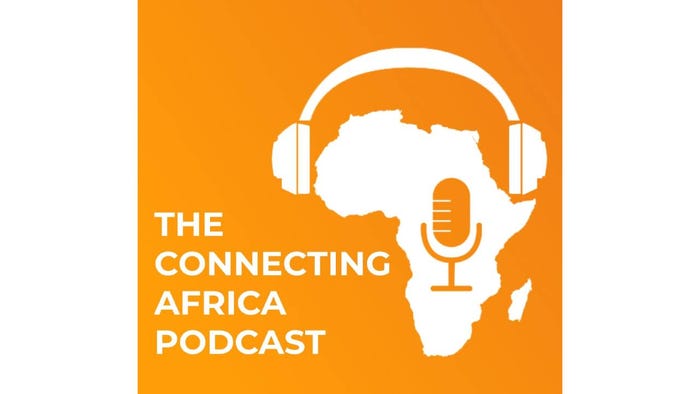Q&A: GSMA's Claire Sibthorpe on closing the mobile gender gapQ&A: GSMA's Claire Sibthorpe on closing the mobile gender gap
Claire Sibthorpe, head of digital inclusion at the GSMA, spoke to Connecting Africa about the Mobile Gender Gap Report 2024, discussing what the numbers mean, the barriers keeping women offline and the outlook going forward.

The GSMA's Mobile Gender Gap Report 2024 was published earlier this month showing that the gender gap in mobile Internet adoption narrowed slightly – both in sub-Saharan Africa and globally – for the first time in a number of years.
Claire Sibthorpe, head of digital inclusion at the GSMA, spoke to Connecting Africa editor Paula Gilbert about what the numbers mean, the barriers keeping women offline and the outlook going forward.
Paula Gilbert (PG): What are some of the key highlights in this year's Mobile Gender Gap Report, particularly for Africa?
Claire Sibthorpe (CS): Our latest data shows that in 2023, this gender gap in mobile Internet adoption narrowed for the first time since 2020. This was due to an increased rate of adoption among women compared to men.
This comes as good news after we shared the concerning findings last year that, for a second year in a row, women's digital inclusion in low- and middle-income countries [LMICs] had slowed and progress in reducing the mobile Internet gender gap had stalled.
This followed years of progress in which the mobile Internet gender gap had narrowed from 25% in 2017 to 15% in 2020. We are now back to where we were in 2020, with women 15% less likely than men to use mobile Internet but it is not clear whether this trend will continue.
Mobile Internet gender gaps are widest in sub-Saharan Africa and South Asia where more than 60% of the 785 million unconnected women in LMICs live. However, these are also the only regions that have seen any progress in the past year.
The gender gap narrowed slightly in sub-Saharan Africa between 2022 and 2023 for the first time in five years which is fantastic news, from 36% to 32%, but this gender gap is similar to what it was in 2017 [34%].
PG: We saw improvements in the mobile gender gap over the past year – both in sub-Saharan Africa and globally – how do we get change to happen faster?
CS: Despite the narrowing of the gender gaps in mobile Internet adoption across LMICs and in sub-Saharan Africa – they are both substantial – these gender gaps are driven by a complex set of social, economic and cultural factors that cannot be addressed by one organization alone.
Further action is required by policymakers, industry, the development community and other stakeholders working together to better measure, understand and address women's needs and the barriers they face.
To drive change, it is critical to understand and address the barriers that women – and men – face to adopting mobile Internet and to using it more.
Our data revealed that, across survey countries, the top barriers preventing men and women from adopting and using mobile Internet are mobile Internet awareness, handset affordability, literacy and digital skills and safety and security concerns.
In sub-Saharan Africa, affordability – particularly of handsets – was the most reported barrier to adoption and use for women but also for men, and has been for many years. Data affordability is reported commonly as a barrier to using mobile Internet more, but to a lesser extent as a barrier to adoption.
Although affordability was the top barrier for both male and female respondents, research has shown that issues such as the gender pay gap and women's lower employment rates mean that handsets are already less affordable for women than men.

Claire Sibthorpe, head of digital inclusion at the GSMA. (Source: GSMA)
GSMA analysis has found that in 2022, on average, the cost of an entry-level handset represents 36% of women's monthly income in sub-Saharan Africa, compared to 24% of men's. This could be improved by policies and initiatives that lower the upfront costs of mobile handsets – particularly Internet-enabled handsets – which has the potential to disproportionately benefit women. For example, lowering mobile-specific taxes, and handset financing initiatives that proactively consider how to reach women – as well as men – in their design, marketing and distribution.
PG: Why is it so important to have gender-disaggregated data when it comes to mobile Internet usage and how can we use it to improve Internet access for women?
CS: Gender-disaggregated data is crucial for measuring the gender gap and informing investments and action to address it.
We run an annual Consumer Survey that tracks women's mobile access and use across LMICs, and this fills important data gaps for both the public and private sector enabling them to track progress and understand where to focus efforts.
But much more data is needed to understand women's needs and the barriers they face, especially in different contexts and among specific groups to ensure targeted action.
PG: What did you find out about people's perceptions of whether mobile Internet is more important for men or women, particularly in Africa? Were you surprised by these findings?
CS: The good news is that we found that most people who are aware of mobile Internet feel that it is equally important for both men and women to use it.
The results show that in the five surveyed sub-Saharan African countries, between 75% and 90% of those who are aware of mobile Internet believe that it is equally important for men and women, with little difference by gender in most cases. It was highest, around 90%, for male and female respondents in Kenya.
However, in almost all these countries, if respondents – male or female – did not believe mobile Internet was equally important for men and women, they were more likely to report that mobile Internet was more important for men.
The most notable example is Nigeria, where 41% of men and 6% of women who are aware of mobile Internet believe it is more important for men. These findings do not vary much by urban-rural location or age.
This was not a surprise given the impact of social norms on women's digital inclusion where in some cases it may not be seen as socially acceptable or appropriate for women to be online.
PG: The barriers to mobile Internet adoption have not changed much in recent years – affordability, literacy, and digital skills – despite a lot of projects targeting these areas. How do we move the needle more effectively in Africa?
CS: Whilst those are indeed the most reported barriers to mobile Internet adoption for men and women, addressing them holistically is essential.
This might include awareness campaigns that highlight different mobile Internet use cases that are relevant and useful for users to increase customers' understanding of what the Internet can be used for and how it can benefit their lives.
This could be coupled with handset financing initiatives that lower the upfront cost of a device for men and women and digital skills training that provide them the skills to be confident they can use the Internet to meet their life needs whilst also keeping themselves safe while doing so.
We also need even greater focus on these issues – by a range of partners, including the private sector, policymakers and the development community.
While some partners are already setting goals and taking action – for example our operator partners who have made formal commitments as part of our Connected Women Commitment Initiative – others are still unaware of the mobile gender gap, or what they can do to address it. Collaboration on addressing these complex issues is essential.
PG: The smartphone figures are still quite small [in sub-Saharan Africa 71% of women own a mobile phone but only 32% own a smartphone] so how can lower device prices and smartphone financing programs help give more women access to mobile Internet?
CS: Since women usually report handset affordability as a greater barrier to accessing and using mobile Internet than men, and there are millions more women than men in Africa who still do not own an Internet-enabled device, efforts to improve device affordability have the potential to benefit women to an even greater extent than men.
However, this will only happen if providers proactively consider how to reach women – as well as men – when they design their device financing schemes, and when they market them and distribute the handsets.
Otherwise, there is the risk that these schemes will predominantly reach men and only entrench the gender divide.
For example, providers can consider using alternative and less stringent eligibility criteria, or preferential scoring for women, given they are often less likely to default.
Providers can also consider combining initiatives such as these with digital upskilling, so women can learn about and get the most out of their devices.
PG: When do you expect the tide to turn and adoption levels to become more equal between men and women?
CS: With positive progress being made in 2023 in closing mobile gender gaps across Africa and LMICs, we hope this momentum continues. But it is too early to tell if this trend continues – whether women's rate of mobile Internet adoption will continue to increase, and the mobile Internet gender gap will continue to narrow.
While there had previously been significant progress in reducing the mobile Internet gender gap, the stalled progress we saw in 2021 and 2022 highlights that it cannot be taken for granted.
What we know is that the digital and mobile gender gap is not going to close on its own and that greater focus and investment are needed to really move the needle and accelerate progress.
Want to know more? Sign up to get the weekly Connecting Africa newsletter direct to your inbox.
You can find the full Mobile Gender Gap Report 2024 here and GSMA video content about the Internet's impact on women here.
*Top image source: Image by freepik
— Paula Gilbert, Editor, Connecting Africa


.jpg?width=700&auto=webp&quality=80&disable=upscale)
_(1).jpg?width=700&auto=webp&quality=80&disable=upscale)

_(1).jpg?width=700&auto=webp&quality=80&disable=upscale)
.jpg?width=700&auto=webp&quality=80&disable=upscale)
.jpg?width=700&auto=webp&quality=80&disable=upscale)
_(1).jpg?width=700&auto=webp&quality=80&disable=upscale)
.jpg?width=700&auto=webp&quality=80&disable=upscale)

.jpg?width=700&auto=webp&quality=80&disable=upscale)